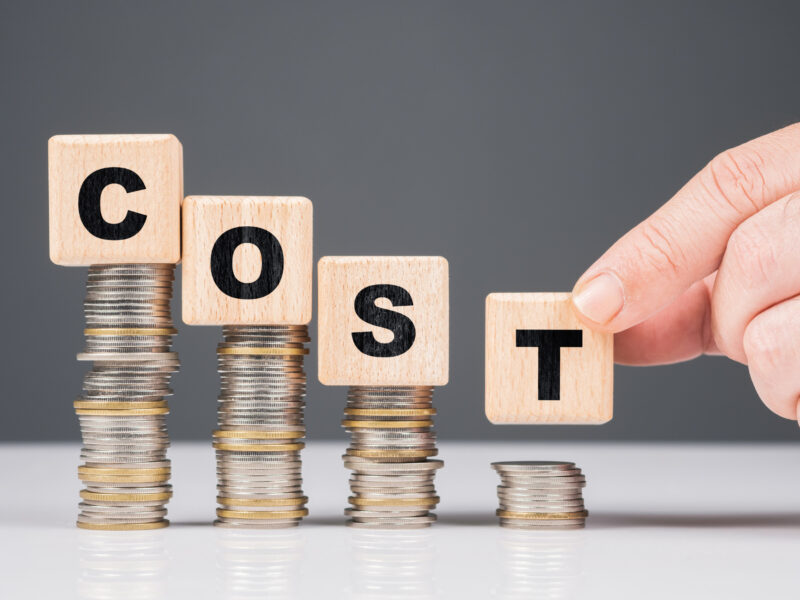There’s an old saying that you can only improve something if you measure it first. That’s true in life and in call centers. That’s why tracking the right call center metrics is key to reaching your performance goals.
But what metrics should you be tracking? We put together this guide to help you decide. Keep reading to find our top 10 call center metrics to track and other tips for boosting call center performance.
Why call center metrics matter
Tracking performance metrics probably isn’t a foreign idea to you. But people often underestimate the importance of choosing the right metrics in this process. The stats you choose to track will influence the types of improvements you can make.
For example, tracking post-call survey results can tell you which aspects of the customer service experience you need to improve in general. But tracking agent-specific stats will tell you which skills a particular agent needs to improve to deliver better results to customers. Both of these are valuable, but help you improve your call center in different ways.
That’s why it’s important to be mindful of your business goals when choosing which call center metrics you’re going to track. If you let your goals guide the metrics you select, you’ll get the data you need to make the targeted improvements you want your call center and employees to achieve.
10 call center metrics you should consider using
Now that we’ve taken a look at why it’s worth thinking critically about the call center metrics you track, let’s get into some specific metric recommendations. Here are 10 important ones which we’ve seen have a large impact on the clients we work with at The Cattalyst.
Net promoter score
The first on our list is your call center’s net promoter score (NPS). As the name suggests, this measurement is designed to assess the percentage of your customers that would promote your business if asked by a colleague, friend, or other potential future customer of yours.
Measuring your NPS gives you insight into your customers’ loyalty and can be a sign of how your company’s reputation is evolving over time. The higher your NPS score is, the likelier you are to retain customers that you convert.
To start measuring your NPS, ask customers to simply rate their experience with your call center representative on a scale of one to ten. Those who answer with 9s and 10s are called promoters. Those who answer with 7s and 8s are called passives. And those who answer with anything under 7s are considered detractors.
As you gather this data, calculate the percentage of promoters and detractors you have. Then, subtract the percentage of detractors you have from your percentage of promoters. The resulting percentage will be your net promoter score. For example, if you have 70% promoters and 10% detractors, your net promoter score is 60%.
Average handle time
Average handle time (AHT) is a metric that nearly every call center can benefit from tracking. It measures the average time that it takes for your call center to completely solve a customer’s inquiry.
To calculate AHT, you add the total talk, hold, and follow-up time across a particular set of phone calls and divide that sum by the total number of calls.
For example, you could up the total talk, hold, and follow-up time your call center has a whole for an entire month, then divide that by the total number of calls you received that month. This would tell you what your average handle time for that month is.
Depending on how you think this stat can serve your business best, you can use the same stat to assess differences in individual agent performance and across different time frames. The idea behind the stat is figuring out how quickly you resolve customer concerns, which is a key factor in determining how satisfied and loyal those customers will remain.
Cost per call
To calculate your cost per call, add up the total cost of running your call center and divide it by the number of calls answered over the same time period. This will tell you the amount that you’re spending per call, which can be a useful metric to consider if you want to start cutting costs. The less you spend per call, the more efficient your call center becomes.

Revenue per call
Revenue per call is very similar to the last metric. You calculate it by finding your call center’s revenue over a set period and dividing it by the number of calls answered during that time frame.
This can be useful if your call center does sales, as it gives you a sense of how much revenue you make on a call-by-call basis. Increasing this metric can be a way to increase the profitability of your call center.
Conversion rate
Conversion rate is a tried-and-true metric that every call center should be thinking about. It’s a measurement of the percentage of calls that end with a successful sale.
Measuring conversion rates is important because they tell you how good your call center is at closing sales. You can also measure the conversion rate of individual employees or teams to get a sense of how different agents compare to one another and which ones may need further training to hit your target.
Cross-selling/up-selling success rate
This metric can be very valuable if you run a call center that focuses on cross-selling and up-selling. It’s similar to conversion rate in that you’re going to measure the percentage of phone calls that end in a successful cross-sell or up-sell.
Measuring this metric will tell you how good your team is at cross-selling and up-selling to customers who are already interested in making a purchase. That can be a different skill than simple conversions, so it could be worth tracking, depending on your business.
Average call abandonment rate
Your average call abandonment rate is a measurement showing the percentage of customers that hang up before ever speaking to an agent.
To calculate this, add up the total number of abandoned calls you have over a time period and divide by the total number of calls overall. For example, if you have 100 abandoned calls and 1,000 total calls in a month, your average call abandonment rate would be .1 or 10%.
This metric lets you know how often customers get frustrated and hang up before receiving the assistance they want. When your call abandonment rate is high, it can be a warning sign for losing customers.

First call resolutions
Next on our list is a metric called first call resolutions. This measures the percentage of customer service phone calls that get resolved without any follow-ups. The idea is that customers greatly prefer first-call resolutions, so if you can provide a high percentage of them, your business can build loyalty and earn repeat business.
To calculate your first-call resolutions, simply add up the number of first-call resolutions you have over a given time period and divide by the total number of calls you receive over that same time period.
Total calls handled
Total calls handled is a simple metric that can provide great information about how your call center’s efficiency is evolving over time. The metric simply involves keeping track of the number of calls your team answers over various time periods such as daily, monthly, and annually.
This metric doesn’t tell you a lot in isolation. But you can track it over time. For example, it can show you that your team is starting to handle fewer calls this quarter than it did last quarter. That could be an early warning sign that it’s time to make some changes and motivate your representatives to ensure they’re processing customer calls as efficiently as possible.
Repeat call rate
Finally, you might also consider tracking your repeat call rate. This tells you the percentage of customers who have to call back after receiving customer service from your call center.
Having to call back is a sign that the customer didn’t receive the initial support they needed, which can cause frustration and lost loyalty. Tracking this rate is an important part of avoiding that and maintaining the customer base that you’ve already built.
This metric is another easy one to track. Simply add up the total number of repeat calls that you receive over a given time period and watch how that figure evolves over time.
The Cattalyst can help your call center implement what you learn from tracking these metrics
Determining which metrics you should track in your call center is an important first step toward achieving the improvements you want to see. But the results you get will only guide you so much. You still need to figure out how to take the information your metrics give you and implement targeted training to improve them.
But there’s no need to do that on our own. The Cattalyst has decades of call center and leadership training experience. We can help you identify your biggest areas for improvement and come up with teamwide or agent-specific training policies that drive targeted growth.
Want to learn more? Sign up for a free consultation and we’ll tell you exactly what we can do for your business.


